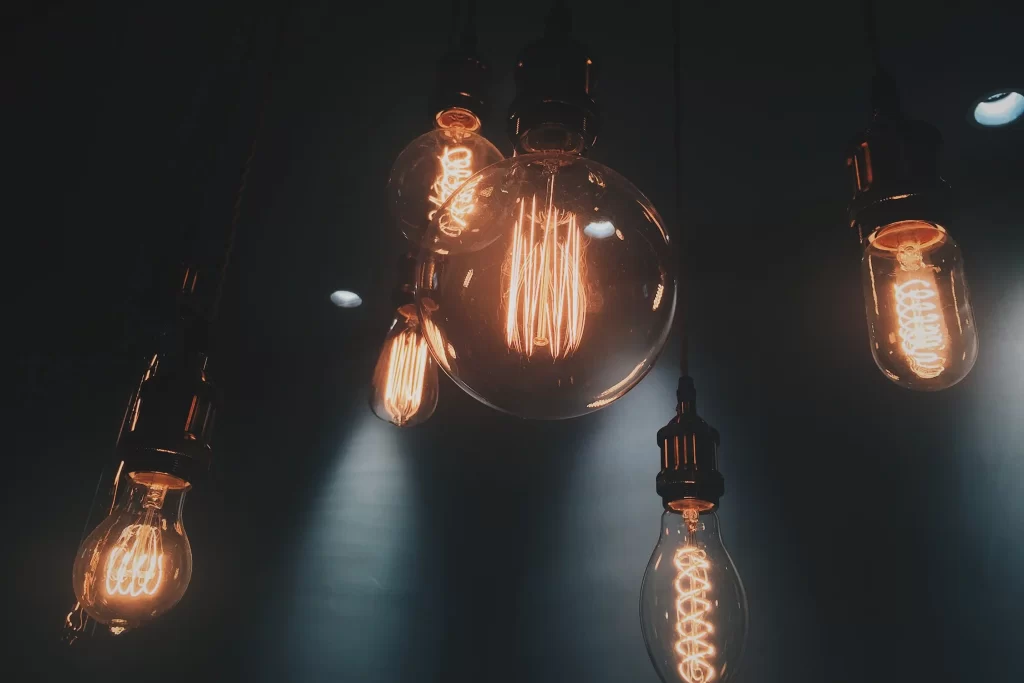The history of the lightbulb is a fascinating journey that spans centuries of innovation, ingenuity, and determination. From the earliest glimmers of artificial light to the sophisticated bulbs that brighten our lives today, let’s explore the illuminating history of this transformative invention.
The Spark of an Idea:
Early Concepts (1800s):
The quest for artificial light predates the modern lightbulb by centuries. In the early 1800s, inventors experimented with various forms of illumination. Sir Humphry Davy’s arc lamp, introduced in 1806, created light by passing an electric current between two carbon rods. While innovative, it was not practical for everyday use.
The Incandescent Breakthrough:
Humphry Davy’s Influence:
Sir Humphry Davy’s work laid the groundwork for the incandescent lightbulb. His experiments with electricity and the incandescence of materials under electric currents inspired subsequent inventors.
Warren de la Rue (1840):
Warren de la Rue, a British astronomer and chemist, patented an early form of incandescent light. He placed a platinum coil in a vacuum tube, demonstrating the concept of incandescence, where an object is heated until it emits light. However, the high cost of platinum made this impractical for widespread use.
Frederick de Moleyns (1872):
Frederick de Moleyns, an Englishman, patented a design that used powdered charcoal heated between two platinum wires. This marked a step forward in creating a practical incandescent light source.
The Dawn of Commercial Lighting:
Joseph Swan (1878):
Joseph Swan, a British physicist, is often credited with the earliest practical incandescent lightbulb. He used a carbonized paper filament enclosed in a vacuum bulb. Swan demonstrated his invention in public, marking a crucial milestone in the development of electric lighting.
Thomas Edison (1879):
While Swan was making strides in the United Kingdom, Thomas Edison, an American inventor, was independently working on the incandescent lightbulb. Edison’s team developed a carbonized bamboo filament, which lasted longer than previous materials. In 1879, Edison successfully demonstrated a reliable and commercially viable incandescent lightbulb, earning him the title of the “Father of the Electric Light.”
Key Milestones and Innovations:
Edison’s Electric Power System (1882):
Edison not only created the lightbulb but also implemented the first electric power distribution system to provide electricity to a mass audience. The Pearl Street Power Station in New York City, opened in 1882, marked the birth of the electric utility industry.
Improvements in Filaments:
Over the following decades, inventors and engineers made significant advancements in filament materials. Tungsten, discovered in 1902, became the preferred filament material due to its high melting point and durability. This contributed to longer-lasting and more efficient lightbulbs.
Compact Fluorescent Lamps (CFLs) and Light Emitting Diodes (LEDs):
In the late 20th century and early 21st century, new technologies emerged to challenge the dominance of incandescent bulbs. Compact Fluorescent Lamps (CFLs) and Light Emitting Diodes (LEDs) offered energy-efficient alternatives with longer lifespans.
Frequently Asked Questions (FAQs):
Q1: Who is credited with inventing the lightbulb?
Thomas Edison is often credited with inventing the practical incandescent lightbulb. While others, like Joseph Swan, also contributed, Edison’s bulb proved to be commercially viable and had a significant impact on the widespread adoption of electric lighting.
Q2: When was the first public demonstration of the incandescent lightbulb?
Joseph Swan publicly demonstrated his incandescent lightbulb in 1878. Thomas Edison’s successful demonstration followed shortly after in 1879.
Q3: What were the major improvements in lightbulb technology after Edison’s time?
Major advancements included the development of more durable and efficient filament materials, such as tungsten. Additionally, the introduction of Compact Fluorescent Lamps (CFLs) and Light Emitting Diodes (LEDs) in later years offered energy-efficient alternatives to traditional incandescent bulbs.




